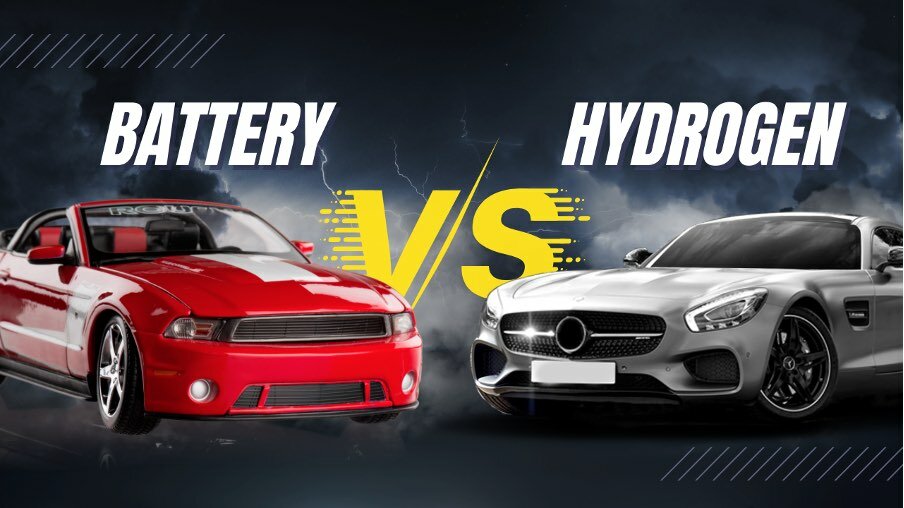
June 28, 2022
EV Landscape – Hydrogen vs. Sodium and Lithium
More than ever, sodium and lithium batteries are becoming a part of the renewable-energy transportation lexicon. Hydrogen fuel cells are becoming an increasing part of the electric vehicle landscape. And proponents are touting hydrogen [...]

More than ever, sodium and lithium batteries are becoming a part of the renewable-energy transportation lexicon.
Hydrogen fuel cells are becoming an increasing part of the electric vehicle landscape. And proponents are touting hydrogen as superior to its lead-acid battery counterparts. However, hydrogen fuel cells have a way to go to catch up to the growing EV market.
Technical progress also has been slow, says Mike Szudarek, automotive practice lead at PR firm Marx Layne & Company.
As of this writing, only two hydrogen-powered cars are on the market: the Toyota Mirai and the Hyundai Nexo. Luxury brands like BMW and Land Rover hope to enter the hydrogen-fuel market in the next half-decade.
Instead of plugging in an EV, hydrogen cars require “filling up,” much like their fossil-fuel counterparts. However, refueling a hydrogen car takes about five minutes, giving it an edge over charging other EVs.
Yet, that isn’t the main reason why hydrogen-fuel cars haven’t gained adoption. It’s the infrastructure. While plans exist to increase stations, less than 100 exist in the U.S., with the majority in California. Having so few stations have steered many hydrogen-fuel car buyers away.
Hydrogen-fuel proponents are saying, “just wait.” The amount of effort to make the cars is intense because hydrogen is a fuel that exists naturally. In electric vehicles, hydrogen has to be separated from other elements, then combined with oxygen through a fuel cell that creates the electricity.
Many projects are underway to produce hydrogen more efficiently. The notion that hydrogen will replace EVs doesn’t exist. Proponents hope it will complement EVs because the fuel is the cleanest.
Producing lithium-ion batteries for EVs is very energy-intensive. The effort to mine lithium leaves a carbon footprint by releasing tons of CO2. Hydrogen, on the other hand, can be obtained through several methods ranging from separating it from natural gas to biomass and electrolysis. Researchers are still working on ways to extrapolate hydrogen while reducing energy.
So, if a tale of the tape were placed between battery electric vehicles and hydrogen fuel cell vehicles, the battery wins out in terms of energy density (the amount of energy obtained per weight) and energy efficiency. Battery electric vehicles have 70-90% energy efficiency, while their hydrogen counterpart has 25-35%.
Driving range gives hydrogen cars a light edge with up to 402 miles per tank, compared to most battery EVs with a range of 200 miles.
Enter sodium-ion batteries. Sodium and lithium are close to one another on the periodic table. Their properties are so alike that sodium-ion technology can be another type of battery for EVs. Sodium has distinct advantages over lithium. Among them:
- Sodium is widely available all over the world, compared to lithium.
- Because there’s so much sodium, it is far less expensive.
- Studies have shown that sodium-ion batteries perform better with a bigger temperature range. Another plus: it’s nonflammable and lightweight, which increases efficiency.
For consumers, the battery EV would be the way to go when it comes to make and model availability and convenience to recharge. However, as hydrogen fuel-cell technology improves and infrastructure improves, experts say it will edge a little closer to matching battery EVs. And if sodium-ion batteries gain acceptance, the technology and availability will improve.
The real winner, however, isn’t the battery electric vehicle or the hydrogen fuel cell car. It’s the environment. Many scientists envision the two non-fossil-fuel vehicles eventually complementing each other. Imagine a fleet of 5,000 battery EVs. Suppose 50% are taken offline each night for recharging. Would the infrastructure in place be able to handle that? Now, suppose that same fleet at 2,500 battery EVs and 2,500 hydrogen fuel cell EVs. Instead of putting a strain on the grid, half the fleet could be operable if hydrogen stations were in place.
In the end, the goal to eliminate CO2 emissions becomes closer to reality if there are a variety of non-fossil-fuel energy sources available.
Marx Layne is your competitive advantage.
Marx Layne is a full-service communication agency. How may we help you succeed?
Share This Story, Choose Your Platform!
Marx Layne is your competitive advantage.
Your reputation and success are our only concerns.
